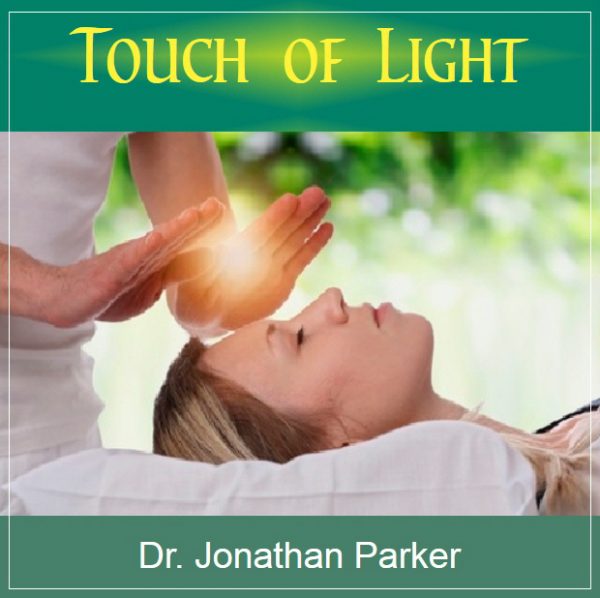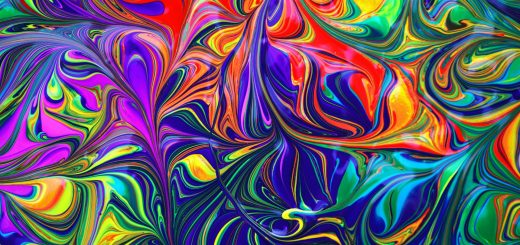Tell-Tale Signs Of Anxiety Attacks (Quick and Simple Guide)

Before diving in, please note: This post is for informational purposes only. If you’d like to know more about how we approach topics, feel free to check out our friendly Disclaimer Page.
Hey there, amazing readers! 🖐️ Just a quick note: yes, we know there are a lot of ads here. Trust us, we get it—it’s not the prettiest look, but they help us keep this blog alive and kicking. Those pesky little ads cover the costs of all the behind-the-scenes magic, from hosting and tech stuff to creating content we hope you’ll love.
We’re committed to delivering quality posts, and your support (even just sticking around despite the ads) means everything to us. So, bear with us, and thanks for helping us keep the good vibes rolling. Now, on to the fun stuff! 😉
TRANSLATE BUTTON AT THE END OF THE ARTICLE
It’s common for the symptoms of an anxiety attack to be quite similar to those of a heart attack, and an anxiety attack may strike without any warning at all.
An anxiety attack may happen to anybody, regardless of whether or not they have been diagnosed with an anxiety condition.
Anxiety attacks do not discriminate and can occur at any time.
If you think you could be having an anxiety attack, here are five indications to look out for:
Sudden Terror or Sense Of Impending Doom
The feeling that you are about to die or being overwhelmed by an enormous fear is one of the most common indicators that you are having an anxiety attack.
The rush of adrenaline that occurs throughout your body when you have the impression that you are in imminent danger may render you helpless and is the cause of the panic that you feel.
Chest Pains
This is the most prevalent symptom that might make you feel as if you are having a heart attack.
If you experience this, get medical attention immediately.
When you’re having a panic attack, the discomfort in your chest might be terrible and make you feel like you’re going to choke.
If you are having chest pains, you should see a doctor as soon as possible to rule out the possibility that you are having a heart attack.
Difficulty Breathing
If you’re suffering from a panic attack, you might find it difficult to breathe normally, or you might have the sensation that you need to gulp for air.
When you have high levels of worry, you may find yourself hyperventilating, which may lead to an imbalance in the quantities of carbon dioxide that are found in your body.
This may result in symptoms such as dizziness and maybe even more.
Increased Heart Rate
When you are having an anxiety attack, your body reacts as though it is in the midst of a potentially life-threatening situation.
A surge of adrenaline is produced when your body’s “fight-or-flight” reaction is triggered by nervous impulses.
This causes your bloodstream to be filled with adrenaline.
This rush in hormones creates a number of symptoms, one of which is an elevated heart rate, which may lead you to believe that you are having a heart attack.
Feeling Out Of Control
When you’re having a panic attack, you may feel as if you have no control over the situation because of the tremendous dread and physical symptoms you’re experiencing.
This might dramatically amplify the terror that you are already experiencing, and it may cause you to feel as if you have been separated from yourself.
It is possible that the world around you seems distorted or blurry.
The symptoms that you may be experiencing during a panic attack are very similar to the symptoms that are experienced during the fight-or-flight response that is encountered during a dangerous situation.
However, the symptoms of an anxiety attack tend to appear out of nowhere when you are having one.
You are in luck because there are a number of things that you can do to help reduce the symptoms of your panic attack and put a stop to it before it ever starts.
Do You Have an Anxiety Disorder?
Having occasional nervous feelings and suffering from an anxiety disorder are two very distinct experiences and conditions.
When you have an anxiety condition, you may find that you get preoccupied with a certain idea or sensation, which then leads to a spiral of more worried thoughts.
There are several kinds of anxiety disorders, but one thing that they all have in common is that they make it difficult for people to go about their normal lives.
You may be dealing with an anxiety disorder if you exhibit any or all of the following symptoms:
Your Anxious Thoughts Don’t Go Away
When you have an anxiety disorder, you may experience extreme levels of anxiety in settings in which other people would just experience moderate levels of worry, such as at family get-togethers.
This anxiety often continues for a longer period of time and is more enduring.
When nervous thoughts begin to have an effect on your day-to-day existence, that is when the situation becomes problematic.
Your Anxiety Manifests Itself Physically
It is possible that you suffer from an anxiety disorder if your worrisome thoughts are accompanied by bodily symptoms such as restlessness, exhaustion, and muscular discomfort, amongst others.
Discover "SUPERFOODS: The Key to Health and Balance🥗" 🌿🌺
Anxiety disorders are associated with a variety of gastrointestinal symptoms, including heartburn, cramps, and even diarrhea.
Your body is in a continual state of heightened anxiety, which is the cause of these physical symptoms that you are experiencing.
You Can’t Focus
It is not that uncommon for people who have a general anxiety issue to be incorrectly labeled with attention deficit hyperactivity disorder (ADHD).
This is because people who struggle with anxiety disorders often have a hard time concentrating on a single task.
When you are continually nervous, you have a tendency to be in your head almost all of the time, and it is easy to get sidetracked by the bad ideas and obsessions that are rattling around in your head.
To an outsider, it seems like you have ADHD.
You Have Trouble Sleeping
Your anxious feelings have a tendency to send your thoughts on a roller coaster ride, which makes it difficult for you to go to sleep at night.
The Anxiety and Depression Association of America (ADAA) asserts that some degree of sleep disturbance is present in almost all forms of mental illness, including anxiety.
If you have more than one of these symptoms, there is a strong possibility that you may be dealing with an anxiety condition.
If you show more than one of these symptoms, there is a good chance that you may be dealing with an anxiety disorder.
However, before drawing any conclusions, it is advisable to check with your doctor to rule out any other problems, since the symptoms of anxiety can match those of other medical disorders.
The good news is that anxiety disorders can be treated, which means you can learn how to control your symptoms and get your life back on track so you can enjoy it again.
Anxiety, Panic and Stress
The sympathetic nervous system is to blame for the physiological condition of anxiety, which is brought on by it (SNS).
The sympathetic nervous system is constantly active at a basic level, which is referred to as the sympathetic tone, and it becomes increasingly active in response to stress.
From this point forward, the “fight or flight” reaction will take place.
It is not necessary for an external factor for one to experience anxiety.
Irrational or unreasonable worries are often the root cause of anxiety.
Panic is tied to the “fight or flight” response.
It is a response that is triggered by an external stimulus and is the result of the activity of the sympathetic nervous system.
Panic, in general, is a sudden dread that may control or overtake our thoughts.
In most cases, a state of panic results from a circumstance that is seen as posing a risk to one’s life or health.
The anxious condition of panic is one that is currently on our minds.
The psychological response that we call stress is the method by which a person filters innocuous stimuli from the outside world.
The assumptions, beliefs, and expectations of the individual doing the filtering are taken into account.
The term “social constructionism” may be used to refer to these preconceived notions, beliefs, and expectations.
Both anxiety and stress have significant contributions to make to one’s basic urge to survive.
The body’s defensive systems include the processes that get it ready to either fight or run away, preparing for whatever course of action will be decided upon in order to save lives, protect health, or protect whatever else is in jeopardy.
Anxiety does not always originate from a genuine need for either fear or protective behavior.
Getting away from things that make us uncomfortable could provide a temporary respite, but those anxious sensations will likely return if the circumstances remain the same.
This pushes us to flee from the issue once again, rather than face the worry and find a solution to it.
Intense Anxiety, Fear, and Discomfort
Worry and panic attacks are abrupt episodes of great dread and discomfort brought on by feelings of anxiety and terror.
Although it may seem as if these assaults take place for no apparent reason, they are in fact the body’s way of reacting to what it interprets as the need to “fight or flight.”
The episodes persist for an average of 10 minutes, although they may sometimes continue for as little as one minute.
In extreme situations, such as this one, uneasy feelings can occur in cycles.
These cycles may continue for very long periods of time.
Discover "Sports Nutrition: The Importance of Nutrition and Exercise for Overall Health 🥗🏋️"
These cycles might produce worry in between bouts known as “anticipation” anxiety.
Sweating, palpitations of the heart, and shortness of breath are three of the most common physical symptoms associated with anxiety episodes.
In addition to these symptoms, it is normal to suffer from tingling and numbness in the extremities, as well as dizziness, lightheadedness, headaches, and nausea.
These may seem to be unrelated to one another, but in reality, they are the consequence of the body’s taking precautions to defend itself.
The abrupt emergence of dread is what triggered the anxiety attack in the first place.
In reaction, the body produces adrenaline, which is then followed by increases in both the heart rate and the breathing rate, as well as an increase in the amount of perspiration produced (to regulate body temperature).
These acts get the body ready for the more strenuous behaviors of either fighting or running away.
These responses often end in physical pain due to the fact that the expected vigorous activity does not follow the panic attack.
The elevated heart rate is experienced as a racing or fluttering sensation in the chest.
Hyperventilation, often known as rapid breathing, causes a decrease in the amount of carbon dioxide found in the lungs and blood.
This causes the tingling, numbness, disorientation, and lightheadedness that you are now experiencing.
Because adrenaline causes blood vessels to constrict, there is a reduction in the amount of blood that is able to flow to the head.
This also plays a role in the lightheadedness and headaches that are occurring.

The Enlightenment Journey is a remarkable collection of writings authored by a distinguished group of experts in the fields of spirituality, new age, and esoteric knowledge.
This anthology features a diverse assembly of well-experienced authors who bring their profound insights and credible perspectives to the forefront.
Each contributor possesses a wealth of knowledge and wisdom, making them authorities in their respective domains.
Together, they offer readers a transformative journey into the realms of spiritual growth, self-discovery, and esoteric enlightenment.
The Enlightenment Journey is a testament to the collective expertise of these luminaries, providing readers with a rich tapestry of ideas and information to illuminate their spiritual path.
Our Diverse Expertise 🌟
While our primary focus is on spirituality and esotericism, we are equally passionate about exploring a wide range of other topics and niches 🌍📚. Our experienced team is dedicated to delivering high-quality, informative content across various subjects ✨.
To ensure we provide the most accurate and valuable insights, we collaborate with trusted experts in their respective domains 🧑🏫👩🏫. This allows us to offer well-rounded perspectives and knowledge to our readers.
Our blog originally focused on spirituality and metaphysics, but we’ve since expanded to cover a wide range of niches. Don’t worry—we continue to publish a lot of articles on spirituality! Frequently visit our blog to explore our diverse content and stay tuned for more insightful reads.





